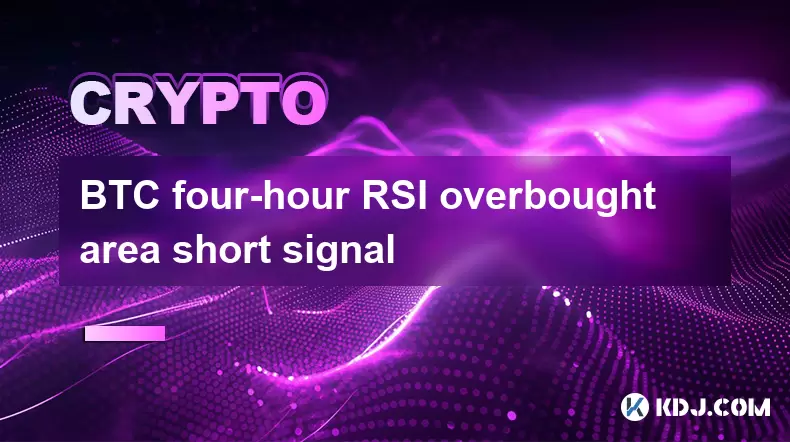-
 Bitcoin
Bitcoin $116400
-0.36% -
 Ethereum
Ethereum $4033
3.40% -
 XRP
XRP $3.302
-1.26% -
 Tether USDt
Tether USDt $1.000
-0.02% -
 BNB
BNB $796.1
1.67% -
 Solana
Solana $177.8
1.89% -
 USDC
USDC $0.9999
0.00% -
 Dogecoin
Dogecoin $0.2314
4.09% -
 TRON
TRON $0.3381
0.14% -
 Cardano
Cardano $0.7989
1.22% -
 Stellar
Stellar $0.4496
-1.84% -
 Chainlink
Chainlink $20.42
9.42% -
 Hyperliquid
Hyperliquid $41.17
0.88% -
 Sui
Sui $3.914
3.77% -
 Bitcoin Cash
Bitcoin Cash $584.7
1.52% -
 Hedera
Hedera $0.2632
-0.54% -
 Avalanche
Avalanche $24.09
3.40% -
 Ethena USDe
Ethena USDe $1.001
-0.02% -
 Litecoin
Litecoin $123.2
1.33% -
 Toncoin
Toncoin $3.318
-0.04% -
 UNUS SED LEO
UNUS SED LEO $8.984
-0.05% -
 Shiba Inu
Shiba Inu $0.00001323
2.85% -
 Uniswap
Uniswap $10.90
4.41% -
 Polkadot
Polkadot $3.999
3.34% -
 Dai
Dai $1.000
0.01% -
 Cronos
Cronos $0.1630
9.64% -
 Bitget Token
Bitget Token $4.484
0.82% -
 Monero
Monero $272.4
2.44% -
 Pepe
Pepe $0.00001173
6.03% -
 Aave
Aave $290.8
2.88%
BTC four-hour RSI overbought area short signal
Use RSI on BTC's 4-hour chart to spot short opportunities when overbought above 70, but confirm with other indicators to avoid false signals and manage trades actively.
Jun 02, 2025 at 03:35 am

In the world of cryptocurrency trading, technical analysis plays a crucial role in decision-making. One popular indicator used by traders is the Relative Strength Index (RSI), which helps identify potential overbought or oversold conditions in the market. When applied to Bitcoin (BTC) on a four-hour chart, an overbought RSI can signal a potential short opportunity. This article will delve into the details of identifying and executing a short trade based on a four-hour RSI overbought signal for BTC.
Understanding the RSI Indicator
The Relative Strength Index (RSI) is a momentum oscillator that measures the speed and change of price movements. It oscillates between 0 and 100 and is typically used to identify overbought or oversold conditions in the market. An RSI value above 70 is generally considered overbought, while a value below 30 is considered oversold.
For traders, an RSI value above 70 might suggest that the asset is overvalued and could be due for a price correction. Conversely, an RSI below 30 might indicate that the asset is undervalued and could be poised for a price increase. In the context of Bitcoin, a four-hour RSI reading above 70 can be used to identify potential short opportunities.
Identifying the Overbought Signal on the Four-Hour Chart
To identify an overbought signal on the BTC four-hour chart, traders need to follow these steps:
- Open your trading platform and select the BTC/USD pair.
- Switch to the four-hour time frame to view the chart in the desired interval.
- Add the RSI indicator to your chart. Most trading platforms allow you to add technical indicators easily.
- Monitor the RSI value as it moves. When the RSI crosses above the 70 level, it indicates an overbought condition.
Once the RSI on the four-hour chart for BTC moves above 70, traders should be on alert for a potential short opportunity. However, it's important to confirm this signal with other technical indicators or price action to increase the probability of a successful trade.
Confirming the Short Signal
While the RSI overbought signal is a good starting point, it's crucial to confirm the signal with additional analysis to avoid false positives. Here are some methods to confirm a short signal:
- Look for bearish candlestick patterns on the four-hour chart, such as shooting stars, bearish engulfing patterns, or evening stars.
- Check for resistance levels that the price has struggled to break through in the past. If the price is near a significant resistance level and the RSI is overbought, it strengthens the case for a short trade.
- Use other momentum indicators like the Moving Average Convergence Divergence (MACD) or the Stochastic Oscillator to confirm the overbought condition.
By combining the RSI overbought signal with these additional confirmations, traders can increase their confidence in the short trade setup.
Executing the Short Trade
Once the overbought signal is confirmed, traders can proceed to execute the short trade. Here's a step-by-step guide on how to do it:
- Determine your entry point. This could be the current market price or a slightly lower price if you're waiting for a pullback.
- Set your stop-loss order. A common practice is to place the stop-loss just above the recent high or a significant resistance level to limit potential losses.
- Calculate your position size. Based on your risk management strategy, determine how much BTC you want to short.
- Execute the short trade. On most trading platforms, you can enter a short position by selecting the "sell" option and entering the desired amount.
After executing the trade, it's important to monitor the position closely and adjust the stop-loss or take-profit levels as needed.
Managing the Short Trade
Managing a short trade effectively is crucial for maximizing profits and minimizing losses. Here are some key points to consider:
- Monitor the trade regularly. Keep an eye on the four-hour chart and the RSI to see if the overbought condition persists or if the RSI starts to move back below 70.
- Adjust your stop-loss. As the trade moves in your favor, consider trailing your stop-loss to lock in profits and protect against a sudden reversal.
- Set a take-profit level. Decide on a target price where you'll close the trade to secure your gains. This could be based on support levels, Fibonacci retracement levels, or other technical analysis tools.
- Be prepared to exit early. If the market conditions change or the RSI moves back into neutral territory, consider closing the trade to avoid potential losses.
By actively managing the short trade, traders can increase their chances of success and mitigate risks.
Common Mistakes to Avoid
When trading based on the four-hour RSI overbought signal, it's important to avoid common mistakes that can lead to losses. Here are some pitfalls to watch out for:
- Ignoring other indicators. Relying solely on the RSI without confirming the signal with other technical analysis tools can lead to false signals and losses.
- Overtrading. Entering too many trades based on RSI signals without proper risk management can quickly deplete your trading capital.
- Failing to set stop-losses. Not setting a stop-loss or setting it too far away can result in significant losses if the market moves against you.
- Chasing the market. Entering a short trade after the price has already moved significantly lower can result in missed opportunities and potential losses.
By being aware of these common mistakes, traders can improve their overall trading performance and increase their chances of success.
Frequently Asked Questions
Q: Can the RSI be used on other time frames for BTC trading?
A: Yes, the RSI can be applied to various time frames for BTC trading, such as the one-hour, daily, or weekly charts. However, the signals and their reliability may vary depending on the chosen time frame. Shorter time frames like the one-hour chart may provide more frequent but potentially less reliable signals, while longer time frames like the daily chart may offer fewer but more significant signals.
Q: How often should I check the RSI on the four-hour chart for BTC?
A: It's recommended to check the RSI on the four-hour chart at least once every four hours, especially if you're actively trading based on this indicator. However, if you're using the RSI as part of a broader trading strategy, you may want to check it more frequently to stay updated on market conditions.
Q: What other indicators can I use to confirm the RSI overbought signal for BTC?
A: In addition to the methods mentioned earlier, you can use other indicators like the Bollinger Bands, the Average True Range (ATR), or the Commodity Channel Index (CCI) to confirm the RSI overbought signal for BTC. Each of these indicators provides additional insights into market conditions and can help validate the short signal.
Q: Is it possible to use the RSI overbought signal for long trades as well?
A: Yes, the RSI overbought signal can also be used to identify potential long trade opportunities. When the RSI moves back below 70 after being overbought, it may indicate that the selling pressure is subsiding and a price increase could follow. Traders can use this signal to enter long positions, especially if other indicators confirm the potential for a price reversal.
Disclaimer:info@kdj.com
The information provided is not trading advice. kdj.com does not assume any responsibility for any investments made based on the information provided in this article. Cryptocurrencies are highly volatile and it is highly recommended that you invest with caution after thorough research!
If you believe that the content used on this website infringes your copyright, please contact us immediately (info@kdj.com) and we will delete it promptly.
- Moat Stocks & Mega-Cap Momentum: July's Standout Performance
- 2025-08-09 12:30:12
- Injective (INJ) Eyes $15.39 Breakout Amidst Explosive Network Growth
- 2025-08-09 12:30:12
- Ripple vs. SEC: XRP Price Soars as Legal Battles End, But Can It Outpace Rising Competitors?
- 2025-08-09 13:10:12
- DWP Management, XRP, and Digital Asset Funds: A New Era for Institutional Investment?
- 2025-08-09 13:30:12
- Pi Network's KYB Verification: A Leap Towards Sustainable Token Launch
- 2025-08-09 13:30:12
- Bitcoin, Dollar Alternative, and Institutional Adoption: A New Era?
- 2025-08-09 13:35:12
Related knowledge

Can the Bitcoin protocol be changed?
Aug 07,2025 at 01:16pm
Understanding the Bitcoin ProtocolThe Bitcoin protocol is the foundational set of rules that govern how the Bitcoin network operates. It defines every...

What happens to Bitcoin transactions once they are confirmed?
Aug 09,2025 at 05:22am
Understanding Bitcoin Transaction ConfirmationWhen a Bitcoin transaction is initiated, it is broadcast to the network and placed in a pool of unconfir...

How are Bitcoin transactions verified?
Aug 08,2025 at 06:57am
Understanding Bitcoin Transaction VerificationBitcoin transactions are verified through a decentralized network of nodes and miners that ensure the le...

How does decentralization make Bitcoin secure?
Aug 08,2025 at 09:35am
Understanding Decentralization in BitcoinDecentralization is a foundational principle of Bitcoin's architecture and plays a critical role in its secur...

What are some common misconceptions about Bitcoin?
Aug 07,2025 at 07:22pm
Bitcoin is Just Like Regular MoneyA widespread misconception is that Bitcoin functions identically to traditional fiat currencies like the US dollar o...

What is the role of nodes in the Bitcoin network?
Aug 08,2025 at 04:14pm
Understanding the Function of Nodes in the Bitcoin NetworkNodes are fundamental components of the Bitcoin network, serving as the backbone that ensure...

Can the Bitcoin protocol be changed?
Aug 07,2025 at 01:16pm
Understanding the Bitcoin ProtocolThe Bitcoin protocol is the foundational set of rules that govern how the Bitcoin network operates. It defines every...

What happens to Bitcoin transactions once they are confirmed?
Aug 09,2025 at 05:22am
Understanding Bitcoin Transaction ConfirmationWhen a Bitcoin transaction is initiated, it is broadcast to the network and placed in a pool of unconfir...

How are Bitcoin transactions verified?
Aug 08,2025 at 06:57am
Understanding Bitcoin Transaction VerificationBitcoin transactions are verified through a decentralized network of nodes and miners that ensure the le...

How does decentralization make Bitcoin secure?
Aug 08,2025 at 09:35am
Understanding Decentralization in BitcoinDecentralization is a foundational principle of Bitcoin's architecture and plays a critical role in its secur...

What are some common misconceptions about Bitcoin?
Aug 07,2025 at 07:22pm
Bitcoin is Just Like Regular MoneyA widespread misconception is that Bitcoin functions identically to traditional fiat currencies like the US dollar o...

What is the role of nodes in the Bitcoin network?
Aug 08,2025 at 04:14pm
Understanding the Function of Nodes in the Bitcoin NetworkNodes are fundamental components of the Bitcoin network, serving as the backbone that ensure...
See all articles

























































































